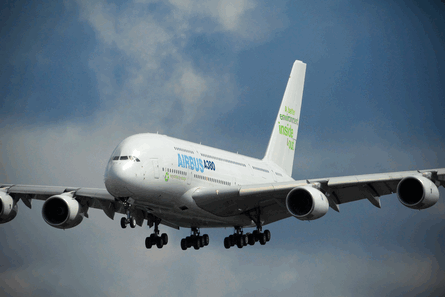Air transport is high profile, attracts a lot of political attention and has become a target for environmental activists, believes Philippe Fonta, Airbus head of sustainable development.
“People challenge the development of aviation and we have to put that into perspective. The perception of air transport does not represent what the performance of air transport actually is,” he says. “We consider the environment very important. We have done a lot over the years and when I say ‘we’ I mean the whole industry. We want to put the environment at the heart of our business.”
- Fonta says the industry’s contribution to a better environment was considerable, including:
- A -20 dB reduction of aircraft noise compared to types common in the 1970s.
- A 90% reduction in unburned hydrocarbon and a 50% reduction in carbon monoxide.
- A 70% reduction in fuel burn over the past 40 years.
- In Europe, just 1% of land use for transport is dedicated to airport infrastructure, compared to 83% for roads.
 |
|---|
“Air transport is clearly a very important element in today’s world,” says Fonta. He compared air links between the Brazil’s capital Brasilia and Belem and a road that would cut through the heart of the Amazon rain forest. “Probably the impact will be much higher if you build a road through the forest.”
A year ago Airbus launched its “eco-efficiency” approach, an intermediate step towards sustainable development. It also supported industry-wide initiatives on environmental improvements focused on four main areas:
- Technology - airframe, engines, cleaner biofuels and other new energy sources
- Infrastructure - improvement to air routes, ATM and airport procedures
- Aircraft operations - driving for maximum efficiency and minimum weight
- Economic instruments - credits and incentives to finance technology research and development
Fonta says Airbus has set itself a range of environmental targets for its manufacturing operations and supported industry-wide targets for aircraft operations. The latter includes a 50% reduction in CO2, a 50% cut in perceived noise and an 80% reduction in NOx. On the industrial front, it aims to cut energy consumption by 30%, CO2 emissions by 50% and an 80% cut in water discharge.
“The best way to reduce the cost of waste is to reduce waste,” he says. “New buildings that we are planning will be designed to a much higher environmental level than we have had previously. Already, we have implemented solar panels in Spain.”
Source: Flight International
















